The human microbiome encodes resistance to the antidiabetic drug acarbose
- PMID: 34819672
- PMCID: PMC10258454
- DOI: 10.1038/s41586-021-04091-0
The human microbiome encodes resistance to the antidiabetic drug acarbose
Abstract
The human microbiome encodes a large repertoire of biochemical enzymes and pathways, most of which remain uncharacterized. Here, using a metagenomics-based search strategy, we discovered that bacterial members of the human gut and oral microbiome encode enzymes that selectively phosphorylate a clinically used antidiabetic drug, acarbose1,2, resulting in its inactivation. Acarbose is an inhibitor of both human and bacterial α-glucosidases3, limiting the ability of the target organism to metabolize complex carbohydrates. Using biochemical assays, X-ray crystallography and metagenomic analyses, we show that microbiome-derived acarbose kinases are specific for acarbose, provide their harbouring organism with a protective advantage against the activity of acarbose, and are widespread in the microbiomes of western and non-western human populations. These results provide an example of widespread microbiome resistance to a non-antibiotic drug, and suggest that acarbose resistance has disseminated in the human microbiome as a defensive strategy against a potential endogenous producer of a closely related molecule.
© 2021. The Author(s), under exclusive licence to Springer Nature Limited.
Conflict of interest statement
Figures
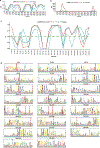

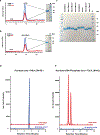
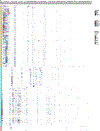
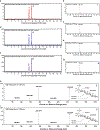
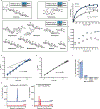
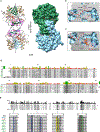
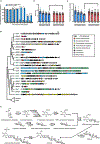
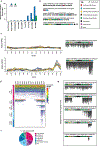




Similar articles
-
Effects of metformin, acarbose, and sitagliptin monotherapy on gut microbiota in Zucker diabetic fatty rats.BMJ Open Diabetes Res Care. 2019 Sep 20;7(1):e000717. doi: 10.1136/bmjdrc-2019-000717. eCollection 2019. BMJ Open Diabetes Res Care. 2019. PMID: 31641523 Free PMC article.
-
Acarbose impairs gut Bacteroides growth by targeting intracellular glucosidases.mBio. 2024 Dec 11;15(12):e0150624. doi: 10.1128/mbio.01506-24. Epub 2024 Nov 20. mBio. 2024. PMID: 39565129 Free PMC article.
-
Deep sequencing of the oral microbiome reveals signatures of periodontal disease.PLoS One. 2012;7(6):e37919. doi: 10.1371/journal.pone.0037919. Epub 2012 Jun 4. PLoS One. 2012. PMID: 22675498 Free PMC article.
-
Effects of Non-insulin Anti-hyperglycemic Agents on Gut Microbiota: A Systematic Review on Human and Animal Studies.Front Endocrinol (Lausanne). 2020 Sep 23;11:573891. doi: 10.3389/fendo.2020.573891. eCollection 2020. Front Endocrinol (Lausanne). 2020. PMID: 33071980 Free PMC article.
-
Application of metagenomics in the human gut microbiome.World J Gastroenterol. 2015 Jan 21;21(3):803-14. doi: 10.3748/wjg.v21.i3.803. World J Gastroenterol. 2015. PMID: 25624713 Free PMC article. Review.
Cited by
-
Two weeks of acarbose treatment shows no effect on gut microbiome composition in patients with type 2 diabetes: a randomised, placebo-controlled, double-blind, crossover study.Endocr Connect. 2024 Jun 28;13(7):e240052. doi: 10.1530/EC-24-0052. Print 2024 Jul 1. Endocr Connect. 2024. PMID: 38842918 Free PMC article.
-
Targeting the human gut microbiome with small-molecule inhibitors.Nat Rev Chem. 2023 May;7(5):319-339. doi: 10.1038/s41570-023-00471-4. Epub 2023 Apr 18. Nat Rev Chem. 2023. PMID: 37117817 Review.
-
Rapid Mining of Novel α-Glucosidase and Lipase Inhibitors from Streptomyces sp. HO1518 Using UPLC-QTOF-MS/MS.Mar Drugs. 2022 Mar 4;20(3):189. doi: 10.3390/md20030189. Mar Drugs. 2022. PMID: 35323488 Free PMC article.
-
Longitudinal profiling of the microbiome at four body sites reveals core stability and individualized dynamics during health and disease.Cell Host Microbe. 2024 Apr 10;32(4):506-526.e9. doi: 10.1016/j.chom.2024.02.012. Epub 2024 Mar 12. Cell Host Microbe. 2024. PMID: 38479397 Free PMC article.
-
Effects of Oral Glucose-Lowering Agents on Gut Microbiota and Microbial Metabolites.Front Endocrinol (Lausanne). 2022 Jul 13;13:905171. doi: 10.3389/fendo.2022.905171. eCollection 2022. Front Endocrinol (Lausanne). 2022. PMID: 35909556 Free PMC article. Review.
References
-
- Chiasson JL et al. Acarbose for prevention of type 2 diabetes mellitus: the STOP-NIDDM randomised trial. Lancet 359, 2072–2077 (2002). - PubMed
-
- Wehmeier UF & Piepersberg W Biotechnology and molecular biology of the alpha-glucosidase inhibitor acarbose. Appl. Microbiol. Biotechnol. 63, 613–625 (2004). - PubMed
-
- Yoon S-H & Robyt JF Study of the inhibition of four alpha amylases by acarbose and its 4IV-α-maltohexaosyl and 4IV-α-maltododecaosyl analogues. Carbohydr. Res. 338, 1969–1980 (2003). - PubMed
-
- Wu H et al. Metformin alters the gut microbiome of individuals with treatment–naive type 2 diabetes, contributing to the therapeutic effects of the drug. Nat. Med. 23, 850–858 (2017). - PubMed
Publication types
MeSH terms
Substances
Grants and funding
LinkOut - more resources
Full Text Sources
Medical
Molecular Biology Databases

